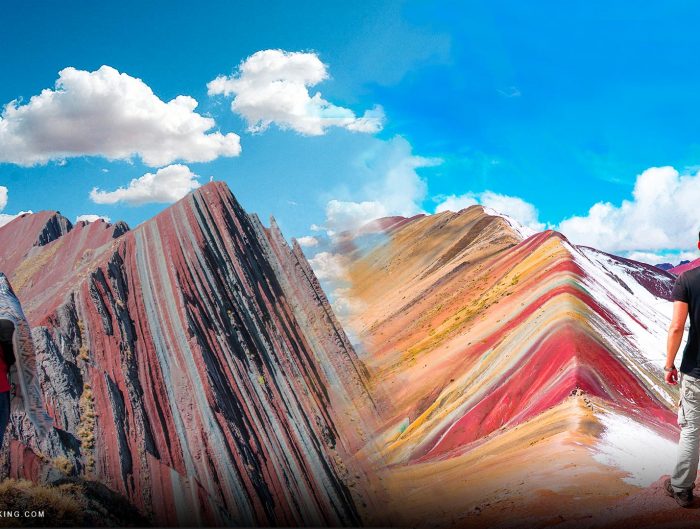December 11th International Day of the Mountains
The mountains have attracted the attention of humans since immemorial times, and their elevation has captivated humans with the idea that they can gain a connection with divinity or their gods by climbing or living near mountains. From ancient Greece and its mythical Mount Olympus, home of its gods, South America and the Apus Inca gods turned into mountains.
The Andes, the Himalayas, the Alps, the Apennines, the Pyrenees, and other mountain systems are home of original towns that preserve their ancestral knowledge, the same ones that are governed by way of life that knows how to care for and renew the abundant resources that offer us nature.
In this article, we will explain the importance of mountains in the planetary ecosystem and for human life. We will also talk about the importance of mountains in ancestral cultures. Then we will talk about sustainable tourism in the mountains in 2021, a topic that addresses the United Nations, to promote the conservation and sustainability of mountains for their international day. Finally, we will mention a list of the highest sacred mountains in Cusco.
Why are mountains important to humanity?
Mountains are essential, in particular, for humanity and, in general, for biodiversity for different reasons. Mountains are home to 15 % of the world’s population and about half of the world’s biodiversity reserve. Mountain vegetation provides food, fibre, and forage, attracts tourists, and is often home to cultural heritage sites and landscapes of exceptional beauty. They are home to many species of animals and vegetation. Furthermore, the major rivers originate in mountainous areas and supply more than half of humanity. Its conservation is key to life on the planet.
However, they are strongly threatened by climate change and overexploitation. As the mountain glaciers melt, the inhabitants of the heights; Among the world’s poorest, they face the most significant difficulties in surviving due to natural disasters.

Mountains and ancient cultures
Mountains have a spiritual meaning in most ancient religions like Machu Picchu, Mount Olympus, Mount Sinai, Mount Athos, the Four Sacred Mountains of Buddhism. Mountain towns have developed unique systems for the use of the land, universally rich in biodiversity and which have evolved over centuries thanks to the harmonious coexistence of these communities with the environment.
For the mountain villages, land, water, and forests are not simply natural resources. Following in the footsteps of their predecessors, new generations understand that their well-being, their identity, and the future of their children depend on the careful stewardship of the environment. Traditional wisdom and techniques are vital to managing and enhancing the resilience of fragile mountain ecosystems.
Tradition, culture, and spirituality are intrinsically rooted in the form of life of all-mountain towns. Many mountainous areas are home to ancient indigenous communities that possess and preserve precious knowledge, traditions, and languages.
In the Andes of Peru live the Quechua communities, descendants of the Incas who still keep their traditions alive. One of their traditions is the offerings they make to the Apus, and sacred mountain guards are mythologized as gods. Another of the many traditions rooted in the towns of the Andes is the pilgrimage of the Lord of Quyllurit’i, a religious festival that takes place on the slopes of the snowy Ausangate mountain. It is one of the greatest religious activities in the Peruvian Southern Sierra. Held annually in honor of the Lord of Quyllur Rit’i, which is the image of Jesus painted on a rock near the snow-capped Ausangate. This pilgrimage has the active participation of a large number of devotees from various indigenous nations.
Sustainable Tourism in the mountains
The mountains are also places of tourism and cultural trails. Tourism in the mountains attracts 15 to 20 percent of world tourism. Tourism in the mountains offers various possibilities to tourists, from walking, skiing to climbing, or visiting imposing sanctuaries located high in the mountains such as Machu Picchu, stone churches in Ethiopia, and incredible glaciers. Routes that are accompanied by unforgettable experiences.
Managed in a sustainable way, mountain tourism can play a decisive role in the promotion and protection of traditional cultures and the creation of projects for the care of its ecosystem, its services, and its wealth.

When is International Mountain Day celebrated?
The United Nations General Assembly designated December 11th as “International Mountains Day.” Since 2003 it has been held every year to raise awareness about the importance of mountains for life, to highlight the opportunities and limits in the development of mountains, and to build alliances that bring positive change, both for mountain towns and for environments around the world.
The highest snow-capped mountains in Cusco
Nevado de Ausangate
It is the highest in the Cusco region at 6271 m.a.s.l.; It belongs to the Cordillera of Vilcanota. This snowy mountain is located 100 kilometers southeast of the City of Cusco in the district of Ocongate, within the province of Quispicanchi. The snowy Ausangate plays the role of Andean deity or Sacred Mountain of the surrounding towns.
Nevado de Salkantay
This is the highest snow-capped mountain in the Vilcabamba mountain range and is the second-highest mountain in the Cusco region after Ausangate. It is the 38th highest peak in the Andes and the 12th highest in Peru. However, it is the second-highest in topographic prominence in the country, after Huascarán. It is located 60 kilometers from the City of Cusco, and it has an elevation of 6271 meters high.
Nevado del Callangate
The snowy Callangate, also known as Collpa Ananta, is a peak covered by perpetual snow and extensive glaciers, reaching 6110 meters of altitude. This snow-capped mountain is located in the province of Quispicanchi, in the Cusco region. This is the second-highest snow-capped mountain in the Vilcanota Mountain Range. Its thaws give rise to small watercourses, which feed the Urubamba River basin.
Nevado La Verónica
Nevado Verónica, also known as Wakaywillque (Sacred Tear), is the highest peak and one of the main ones in the Urubamba Mountain range. It is located 50 kilometers from the city of Cusco, northwest of Ollantaytambo on the border of the Urubamba and La Convención provinces. It has a height of 5682 m.s.n.m.
Nevado Chicón
They are also called “Veil of the Bride.” This snowy peak belongs to the Urubamba Mountain range and height 5530 m.a.s.l. It is located in the Cusco region, in the Urubamba province. In addition, you can see this impressive snow-capped mountain from the town of Chinchero and the Sacred Valley.
Nevado Humantay
Located in the Vilcabamba mountain range in the Cusco region, Anta province of the Mollepata district at 5473 meters above sea level. The Humantay mountain is also an extraordinary place that, when melted, forms a lagoon of emerald waters that spectacularly reflect the entire landscape.
Do you want to know the highest mountains of Cusco?
I recommend you to look for a good tour operator, who will provide you with the guidance and good organization of your trip. In my experience on the trek to Ausangate, I recommend Salkantay Trekking. They made my excursion a life experience that I will never forget. I enjoyed every moment because they were one step ahead to make every detail harmonious and comfortable for me and my groupmates. Get to know the beautiful Andean landscapes in the mountains of Cusco, and explore your adventurous soul. Remember, “The mountains are calling….”
Written by: Iris Velasco.














Leave A Reply